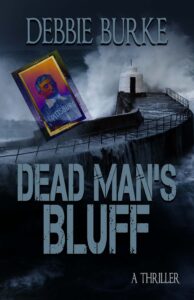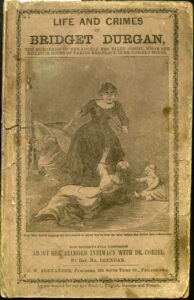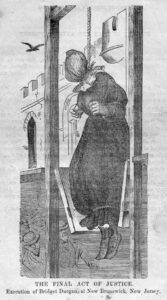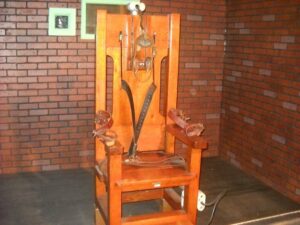By Sue Coletta
Back in 2017, I shared the story of the Toolbox Killers on my blog. I’m reposting it today to help bring attention to the case, because one of the men in the deadly duo dubbed the “Toolbox Killers” is scheduled to walk free this year.
Halloween night, 1979, 16-year-old Shirley Lynette Ledford made one fatal mistake — trusting the two men who offered her a ride. Forty-eight hours later, a jogger found her naked remains on a random front lawn in Sunland, California. Posed with her legs apart, her mutilated corpse lay in an ivy patch.
No one could have imagined the horror she endured.
If you’re at all squeamish, you may want to stop reading. The following is a true account.
It all started in 1977 when 29-year-old Roy Norris met 36-year-old Lawrence Bittaker while incarcerated at California Men’s Colony in San Luis Obispo. The two men — later dubbed “The Toolbox Killers” — shared sexually violent fantasies, which led to a maniacal pact. Upon release they planned to rape, torture, and murder teenage girls. Specifically, one girl of each teenage year from 13 to 19. Two years later, they teamed up on the outside and bought a silver 1977 GM cargo van, nicknamed “Murder Mack.”
From February to June 1979, this murderous duo picked up more than twenty female hitchhikers, not to assault but to practice luring girls into the van. They also used this time to search for a desolate locale. In April, they discovered a secluded fire road in the San Gabriel Mountains. Crowbar in hand, Bittaker snapped the lock on the gate to the fire road and replaced it with his own.
All they needed now was a victim.
On June 24th, 16 year-old Lucinda Lynn Schaefer left her Presbyterian Church meeting in Redondo Beach. She couldn’t have known the evil that awaited her.
After Bittaker and Norris finished constructing the bed in the rear of the van, beneath which they placed tools, clothes, and a cooler filled with beer and soda, they drove to the beach around 7:45 p.m. Lucinda was walking down a side street, and Bittaker remarked, “There’s a cute little blonde.” But their first attempt to entice her into the van was unsuccessful. Bribes of marijuana, beer, and a ride home didn’t work. So, they drove past her and parked alongside a driveway, where Norris exited the vehicle, slid open the side-door, and leaned into the van with his head and shoulders obscured from view. As Lucinda passed by, she exchanged a few words with Norris before he pounced, dragging her into the van.
That moment sealed her fate.
With bound wrists and ankles, her mouth duct-taped, Lucinda had no way to defend herself. Despite her initial scream, the only thing she could control was denying these monsters the satisfaction of witnessing her pain.
“She displayed a magnificent state of self-control and composed acceptance of the conditions of which she had no control,” claimed Bittaker in a written statement. “She shed no tears, offered no resistance, and expressed no great concern for her safety. I guess she knew what was coming.”
With the radio volume at full-blast, Bittaker drove to their pre-arainged spot in the mountains. Norris remained in the back of the van with Lucinda. Once on the fire road, the two men took turns raping Lucinda while the other “took a walk.” The only thing Lucinda asked for was “a second to pray” before Norris attempted to manually strangulate her. Forty-five seconds in, and he became so freaked out by her protruding eyes he ran to the front bumper of the van and vomited.
Bittaker remained unfazed. He wrapped his vice-gripped fingers around her neck, her body slowly wilting to the ground. When the convulsions started Bittaker snaked a wire coat hanger around Lucinda’s throat and squeezed it tight with pliers — an act both men would repeat again and again.

Lawrence Bittaker at his trial in 1979.
Norris and Bittaker rolled Lucinda’s dead body in a plastic shower curtain and tossed her into a canyon, where they expected wild animals to cover their heinous act.
A similar cycle occurred two weeks later when the murderous pair spotted 18-year-old Andrea Joy Hall hitchhiking along the Pacific Coast Highway. After raping and torturing Andrea, they forced her to pose for Polaroids. Sheer terror shone in her eyes as she pleaded for her life. Neither man listened. Instead, they drove an ice pick through her skull, strangled her, and then tossed her lifeless remains off a cliff.
On September 3rd, Jackie Doris Gilliam and Jacqueline Leah Lamp waited at the bus stop near Hermosa Beach. Luring the two girls into the van with marijuana and a free ride worked remarkably well. Until the girls noticed Bittaker wasn’t heading toward the Pacific Coast Highway. Rather, he drove toward the San Gabriel Mountains. When 13-year-old Jacqueline slid open the side-door in an attempt to escape, Norris slammed her over the head with a pre-filled bag of lead weights, knocking her momentarily unconscious. He then bound and gagged 15-year-old Jackie Gilliam. But Jacqueline regained composure and again tried to flee. Sadly, she was no match for Norris, who wrenched her arm behind her back and dragged her back into the van.

Roy Norris shortly before his arrest.
Meanwhile, Bittaker, noting the struggle was in full view of potential eyewitnesses, slid the shifter into park, climbed in back, and sucker-punched Jacqueline in the face, then assisted Norris in binding and gagging the two girls.
They finally arrived in the San Gabriel Mountains, where Jackie and Jacqueline were held captive for nearly two full days, repeatedly raped and forced to pose for pornographic Polaroids.
Bittaker tape-recorded the first time he’d raped young Jackie, telling her to “feel free to express your pain.”
At trial, Norris claimed he buried the cassette in a nearby cemetery, though it’s never been recovered.
These poor girls were tortured in unthinkable ways, including having their breasts punctured with an ice pick. Norris also tore off one of Jackie’s nipple with pliers.
Even death didn’t come swiftly. Bittaker drilled an ice pick into both of Jackie’s ears before strangling her to death. He beat Jacqueline with a sledgehammer, strangled her for fun, beat her again, and then strangled her to death. The Toolbox Killers tossed both bodies over an embankment into a California chaparral.
From the grave Shirley Lynette Ledford, whom I mentioned at the beginning of this post, ignited the strongest emotional response in the jurors and courtroom audience. The prosecutor played 17 grueling minutes of a tape recording that showed the amount of terror Shirley endured before death. The transcript of which you can find here. Before you click that link, I need to caution you. This isn’t easy reading, nor is it easy to listen to the first few minutes of the accompanying video, where Shirley’s blood-curdling screams carry through closed courtroom doors. This sweet, young girl endured masochist behavior at the hands of pure evil. Proceed at your own risk.
Some say 16-year-old Shirley Ledford accepted a ride on that fateful Halloween night because she recognized Bittaker from the restaurant where she’d worked as a part-time waitress. Apparently, Bittaker was a regular.
Moments after Shirley climbed inside the van, Bittaker drove to a secluded side street while Norris drew a knife. He then bound and gagged Shirley with barricade tape.
The nightmare had begun.
Bittaker traded places with Norris, who drove aimlessly for over an hour as Bittaker tormented Shirley, ordering her to “scream louder. What’s the matter? Don’t you like to scream?”
On tape, Shirley pleaded with Bittaker. “No! Don’t touch me!” To which Bittaker replied, “Scream as loud as you wish,” and then bludgeoned her with a sledgehammer, punched her breasts in order to “beat them back into her chest.” As Bittaker raped and sodomized Shirley repeatedly, he tortured her with pliers, tearing her insides till she was no longer “rape-able,” according to Norris.
At trial, Norris described “screams … constant screams” from the rear of the van.
“We’ve all heard women scream in horror films … still, we know that no one is really screaming. Why? Simply because an actress can’t produce some sounds that convince us that something vile and heinous is happening. If you ever heard that tape, there is just no possible way that you’d not begin crying and trembling. I doubt you could listen to more than a full sixty seconds of it.” ~ Serial Killer Roy Norris
Don’t be fooled by that quote. Norris has an IQ of 135. So, even though he tried to downplay his involvement during his testimony, he still switched places with Bittaker to torture and sexually assault this young girl. Norris was also the one who switched on the tape recorder to memorialize their sadistic treatment of Shirley. Both men were equally vicious. They had no empathy for the victims or their families. In my opinion, Norris deserved equal punishment, but he was able to cut a deal by testifying for the prosecution.

Shirley Lynette Ledford
Back in the van, Shirley saw Norris grab the sledgehammer, and screamed, “Oh no! No! No! No! Please, no!”
Norris struck her in the left elbow, shattering the bone. Shirley begged him not to hit her again, but he didn’t listen. Norris struck that same broken elbow 25 more times.
When he finally stopped, he glared at Shirley, who was sobbing, shaking, and terrified.
“What are you sniveling about?” he said.
“Please, just do it! Kill me!”
After two solid hours of unfathomable torture, Norris finally killed Shirley by strangling her with a coat hanger, tightening the wire with pliers. Bittaker opted to pose her body on a random lawn in Sunland to gauge the public’s reaction. Norris agreed. So, under the cover of darkness, Bittaker played look-out as Norris posed Shirley’s mutilated remains on an ivy patch. Not wanting to waste his last chance to humiliate this poor girl, he wrenched open her legs.
Death by lethal injection is too kind for these two, IMHO. They deserve to die like Shirley, Jackie, Jacqueline, and many others.
The autopsy revealed extensive blunt-force trauma to Shirley’s angelic face, head, breasts, left elbow, with her olecranon (the bony tip of the elbow) sustaining multiple fractures. Torn genitalia and rectum was caused in part by Bittaker raping her with pliers. Her left hand bore a puncture wound and a deep slash mark scarred the finger on her right hand. At trial, Bittaker claimed the tape recording was nothing but a threesome, but added that toward the very end Shirley Ledford pleaded for death.
Can you blame her? There’s only so much pain a body can endure. I’d probably pray for death, too.
Investigators eventually found the remains of Jacqueline Leah Lamp and Jackie Doris Gilliam in the San Gabriel Mountains. The bodies of Lucinda Schaefer and Andrea Hall have never been found.
As for Bittaker, an initial execution date was set for December 29, 1989, which Bittaker appealed. The U.S. Supreme Court upheld the decision and set a new date of execution for July 23, 1991. And again, Bittaker appealed. Only this time, on July 9, 1991, the court granted a stay. As of 2017, Lawrence Bittaker remained on death row in San Quentin State Prison.
In total, police found 500 Polaroids and identified 19 missing girls, but Norris only admitted to five murders before he stopped talking. The parole board denied his request for release in 2009. But this year, 2019, he will have served his full 45-year prison term. The worst part? He promised to “have a little fun once he gets out.”
Let’s all take a moment to remember these innocent victims who died way too young, way too brutally. Hug your children a little tighter tonight. This monster will soon walk free.



 The sleepy town of Bad Kreuznach, Germany found itself at the center of one of the most bizarre, high-profile murder mysteries in the country’s history — the search for a serial killer the police called The Woman Without a Face.
The sleepy town of Bad Kreuznach, Germany found itself at the center of one of the most bizarre, high-profile murder mysteries in the country’s history — the search for a serial killer the police called The Woman Without a Face.
 Then, in April, 2007, German officer, Michele Kiesewetter, 22 years old, presumably approached the mystery woman in a car park. At close range The Phantom shot her in the face, killing her instantly. She also shot Officer Kiesewette’s male partner, who slipped into a coma from his injuries. When he woke he had no memory of the killer.
Then, in April, 2007, German officer, Michele Kiesewetter, 22 years old, presumably approached the mystery woman in a car park. At close range The Phantom shot her in the face, killing her instantly. She also shot Officer Kiesewette’s male partner, who slipped into a coma from his injuries. When he woke he had no memory of the killer.


 If a prisoner survives multiple trips to the gallows, should he be set free?
If a prisoner survives multiple trips to the gallows, should he be set free? A little digging led me to an English criminal named Joseph Samuels. In 1801, a jury convicted Samuels of robbery at the tender age of 15 years old and shipped him to Australia, to serve his time at a penal colony in Sydney Cove.
A little digging led me to an English criminal named Joseph Samuels. In 1801, a jury convicted Samuels of robbery at the tender age of 15 years old and shipped him to Australia, to serve his time at a penal colony in Sydney Cove.


 Wes Craven found inspiration for his 1977 slasher film The Hills Have Eyes when he read about the horrors of one particular family of serial killers — the Sawney Bean clan. This is their story. (Did anyone else hear Law & Order’s theme song when they read that line?)
Wes Craven found inspiration for his 1977 slasher film The Hills Have Eyes when he read about the horrors of one particular family of serial killers — the Sawney Bean clan. This is their story. (Did anyone else hear Law & Order’s theme song when they read that line?)